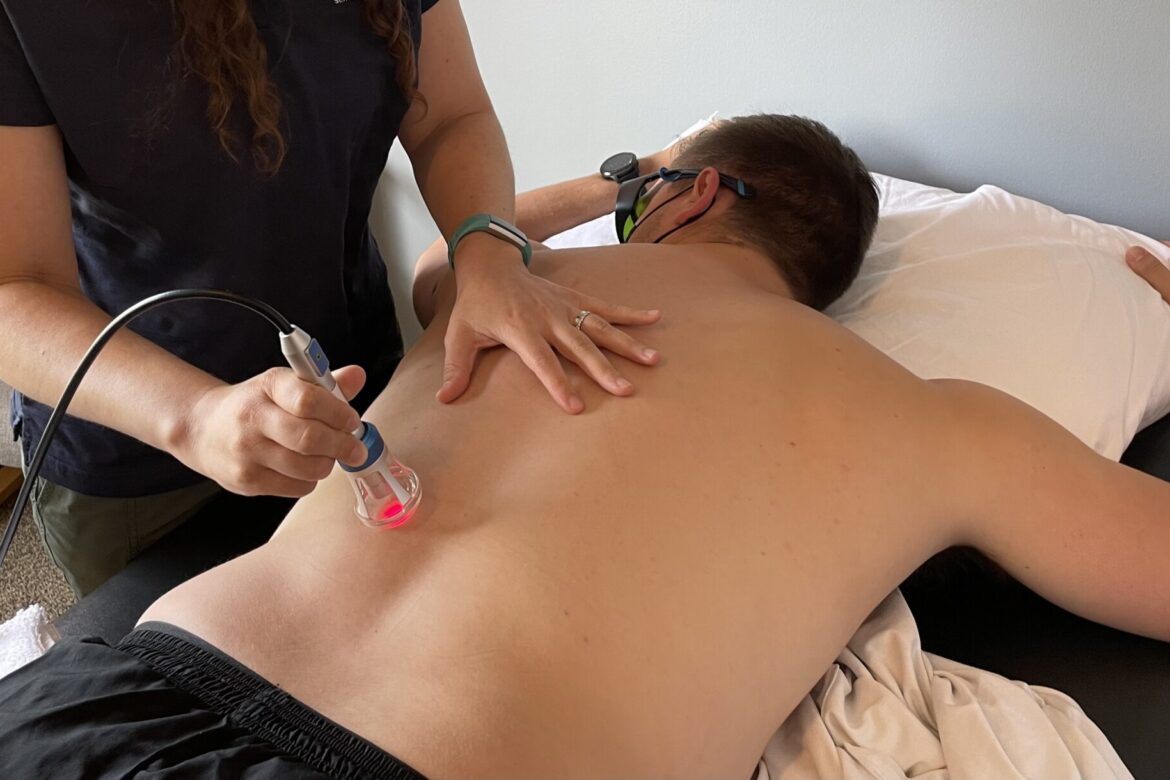Fibromyalgia Treatment Options for You
Fibromyalgia affects approximately 4 million people in the United States, roughly 2% of the adult population. Common symptoms include pain and stiffness all over the body, fatigue and tiredness, depression and anxiety, sleep problems, and headaches and migraines. Other less common symptoms include tingling or numbness in hands and feet, pain in the face or jaw, and digestive problems.
More about Fibromyalgia
Stiffness and pain globally throughout the body are one of the most common complaints and what initially may lead the person to their doctor in the first place. What we have seen in the clinic and what gives us an idea that something else is going on, is one week, the patient comes in complaining of L shoulder pain. Then, a week later, they may come in complaining of right knee pain. Pain that comes and goes and doesn’t have an apparent cause is typically a red flag.
After the diagnosis of fibromyalgia, treatment is a combination of medications, exercise, education on activity, stress management, and sleep hygiene. Collaboration of all treatments helps to maintain function and improve pain and stiffness to allow the person to continue a high quality of life. Many different professionals work together to help coordinate the different areas of care in the treatment of fibromyalgia. Rheumatologists, pain management physicians, primary care physicians, mental health professionals, physical therapists, and sleep specialists all play integral roles in helping the person maintain a high quality of life.
How PT can help treat Fibromyagia
Physical Therapy can help keep those with fibromyalgia active, improve/maintain function, and decrease stiffness and pain. It is recommended that adults get 150 minutes per week of moderate physical activity. With fibromyalgia, exercise may need to be broken up into shorter 10–15-minute sessions throughout the day. This way, physical activity doesn’t increase pain. Also, increments of exercise throughout the day may help to keep the body moving and reduce stiffness. It has been shown that low-impact exercises, such as walking, swimming, and cycling are good for those with fibromyalgia. Also, Tai-chi has shown effectiveness in increasing mobility through slow, deliberate movements that coordinate with breathing.
Functional Activites and Exercise
Physical Therapy can also work on functional activities that may become more difficult to perform with fibromyalgia. A physical therapist can assess and develop individual treatment programs to help with the specific movements or activities that are more difficult. If you are having trouble standing to cook/prepare meals, opening jars/containers, or finding it more challenging to get in or out of the car, a physical therapist can help. Learning different strategies, alternative methods, or improving strength or range of motion are all within the physical therapist’s scope of practice.
Physical Therapy also offers the ability to include hands-on manual therapy techniques that can help to reduce muscle tension, muscle strain, and stiff joints. Gentle mobilization of the tissue to induce relaxation, but not pain is key for those with fibromyalgia.
In addition to a hands-on physical therapy approach including manual therapy to help reduce muscle tightness and pain, and exercises to improve strength and mobility, modalities can be used to enhance healing and reduce pain and stiffness. At Freedom Physical Therapy Services, the state-of-the-art class IV therapeutic laser treatment is an additional modality that has been used along with those listed above. It has been especially beneficial to those suffering from conditions like fibromyalgia.
A different approach to Fibromyalgia
Class IV LASER therapy works by emitting wavelengths that painlessly transfer energy to nerve, muscle, ligament, and tendon tissue under the area being treated. It stimulates the production of ATP which drives many of the processes within the cells. ATP carries oxygen, blood, and nutrients to the area treated with the LASER, which speeds up recovery and pain relief. Reduced pain and swelling, decreased tenderness, along with an increased range of motion, and the soothing heat from the LASER help to relax tissues.
There are benefits to the class IV LASER that Freedom Physical Therapy Services utilizes. Some of the benefits include the LASER head can get at small, hard to get to areas, unreachable by large, bulky, and other LASERs. Especially with fibromyalgia, it is important to target all areas that are stiff and painful. This can include hands and feet, smaller areas to access. Each session ranges from 5-10 minutes and multiple treatment areas can be done during a single session. This allows for improved patient results and helps you feel better faster. People notice improvements after their first session. Another benefit to the LASER is that it is a drug-free, surgery-free, side effect-free option to reduce pain and swelling. It can treat both acute symptoms of fibromyalgia, as well as, more chronic conditions.
While fibromyalgia requires a multi-discipline approach, physical therapy can help you gain functional abilities, maintain and build strength, reduce stiffness and improve range of motion, and reduce pain, leading to a higher quality of living. If you or a loved one suffers from fibromyalgia and would benefit from PT and class IV LASER therapy, set up your appointment with us today.


Where can i get help with pain and these services? Iv light therapy etx
if you live in the Greater Milwaukee area, all four of our clinics have laser therapy